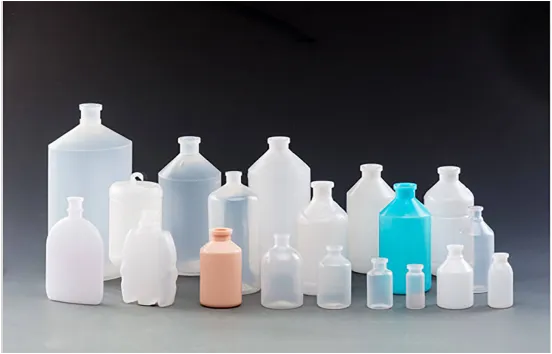
-
 Afrikaans
Afrikaans -
 Albanian
Albanian -
 Amharic
Amharic -
 Arabic
Arabic -
 Armenian
Armenian -
 Azerbaijani
Azerbaijani -
 Basque
Basque -
 Belarusian
Belarusian -
 Bengali
Bengali -
 Bosnian
Bosnian -
 Bulgarian
Bulgarian -
 Catalan
Catalan -
 Cebuano
Cebuano -
 Corsican
Corsican -
 Croatian
Croatian -
 Czech
Czech -
 Danish
Danish -
 Dutch
Dutch -
 English
English -
 Esperanto
Esperanto -
 Estonian
Estonian -
 Finnish
Finnish -
 French
French -
 Frisian
Frisian -
 Galician
Galician -
 Georgian
Georgian -
 German
German -
 Greek
Greek -
 Gujarati
Gujarati -
 Haitian Creole
Haitian Creole -
 hausa
hausa -
 hawaiian
hawaiian -
 Hebrew
Hebrew -
 Hindi
Hindi -
 Miao
Miao -
 Hungarian
Hungarian -
 Icelandic
Icelandic -
 igbo
igbo -
 Indonesian
Indonesian -
 irish
irish -
 Italian
Italian -
 Japanese
Japanese -
 Javanese
Javanese -
 Kannada
Kannada -
 kazakh
kazakh -
 Khmer
Khmer -
 Rwandese
Rwandese -
 Korean
Korean -
 Kurdish
Kurdish -
 Kyrgyz
Kyrgyz -
 Lao
Lao -
 Latin
Latin -
 Latvian
Latvian -
 Lithuanian
Lithuanian -
 Luxembourgish
Luxembourgish -
 Macedonian
Macedonian -
 Malgashi
Malgashi -
 Malay
Malay -
 Malayalam
Malayalam -
 Maltese
Maltese -
 Maori
Maori -
 Marathi
Marathi -
 Mongolian
Mongolian -
 Myanmar
Myanmar -
 Nepali
Nepali -
 Norwegian
Norwegian -
 Norwegian
Norwegian -
 Occitan
Occitan -
 Pashto
Pashto -
 Persian
Persian -
 Polish
Polish -
 Portuguese
Portuguese -
 Punjabi
Punjabi -
 Romanian
Romanian -
 Russian
Russian -
 Samoan
Samoan -
 Scottish Gaelic
Scottish Gaelic -
 Serbian
Serbian -
 Sesotho
Sesotho -
 Shona
Shona -
 Sindhi
Sindhi -
 Sinhala
Sinhala -
 Slovak
Slovak -
 Slovenian
Slovenian -
 Somali
Somali -
 Spanish
Spanish -
 Sundanese
Sundanese -
 Swahili
Swahili -
 Swedish
Swedish -
 Tagalog
Tagalog -
 Tajik
Tajik -
 Tamil
Tamil -
 Tatar
Tatar -
 Telugu
Telugu -
 Thai
Thai -
 Turkish
Turkish -
 Turkmen
Turkmen -
 Ukrainian
Ukrainian -
 Urdu
Urdu -
 Uighur
Uighur -
 Uzbek
Uzbek -
 Vietnamese
Vietnamese -
 Welsh
Welsh -
 Bantu
Bantu -
 Yiddish
Yiddish -
 Yoruba
Yoruba -
 Zulu
Zulu
Essential Tools for Chemists Understanding the Importance of Dropper Bottles in Laboratory Work
The Essential Dropper Bottle A Chemist's Companion
In the world of chemistry, precision is paramount. Whether conducting experiments in a bustling laboratory or mixing solutions in a quiet home workspace, the tools at a chemist's disposal can make or break their results. Among these essential tools, the dropper bottle stands out as an invaluable companion, facilitating the meticulous process of measuring and dispensing liquids.
A dropper bottle is typically a small container equipped with a dropper or pipette as part of its lid. This design enables chemists to control the flow of liquids with remarkable accuracy. The ability to dispense just a single drop or a series of droplets without spilling or contaminating the solution is critical in many experimental protocols. For instance, when working with concentrated reagents or sensitive biological solutions, even minor deviations in volume can lead to significantly altered outcomes.
The Essential Dropper Bottle A Chemist's Companion
One of the key benefits of using dropper bottles is their versatility. They are suitable for a diverse range of liquids, from acids and bases to oils and solvents, making them a common sight across various fields of chemistry. Whether a chemist is creating a new formula or performing routine maintenance on existing materials, dropper bottles are integral to their work. Additionally, the controlled dispensing allows for incremental additions of reagents, which are crucial during sensitive titrations or the preparation of standard solutions.
dropper bottle chemist

However, it is not only the design and functionality that make dropper bottles essential; the way they foster good laboratory practices is equally important. The act of using a dropper bottle encourages careful handling and consideration of the substances being used. This proactive approach can help minimize waste and reduce the risk of accidents—a commitment to safety that all chemists must maintain.
Moreover, dropper bottles are often an entry point for those new to chemistry. They demystify the process of measurement and experimentation, allowing students and amateur chemists to engage with the field without feeling overwhelmed. Through the hands-on experience of using a dropper bottle, budding scientists can develop an appreciation for precision and methodical practices, laying a solid foundation for their future endeavors.
Sustainability is another aspect worth mentioning. With rising environmental concerns, many manufacturers now offer eco-friendly dropper bottles made from recyclable materials. This shift not only reduces plastic waste but also aligns with the growing trend in the scientific community towards sustainable lab practices.
In conclusion, the dropper bottle is more than just a container; it is a vital instrument in the chemist's toolkit. Its precision, versatility, and role in promoting good practices make it indispensable in laboratories worldwide. As the field of chemistry continues to evolve, the humble dropper bottle will undoubtedly remain a trusted companion for both seasoned professionals and aspiring scientists alike, bridging the gap between theory and practice in the fascinating world of chemical exploration.
-
Premium Metal Dropper Bottle for Precise Dispensing 250ml & 1ml Options AvailableNewsJul.04,2025
-
20 ml Headspace Vials - High Quality Polyethylene & Plastic Vials for Lab UseNewsJul.04,2025
-
Small Bottle with Pipette - Precise Dispensing 100ml Pipette Bottles for Essential Oils & Lab UseNewsJun.24,2025
-
Acetic Anhydride Bottle for Accurate Dropper Measurement in Pharmacy Use High-Quality Dropper BottlesNewsJun.10,2025
-
Innovative PET Bottle Design for Juice – Unique Shapes & Customization OptionsNewsJun.10,2025
-
20 Pack Sterilized Petri Dishes – Assorted Sizes, High Quality Small Plastic Petri Dishes for Lab UseNewsJun.10,2025






















